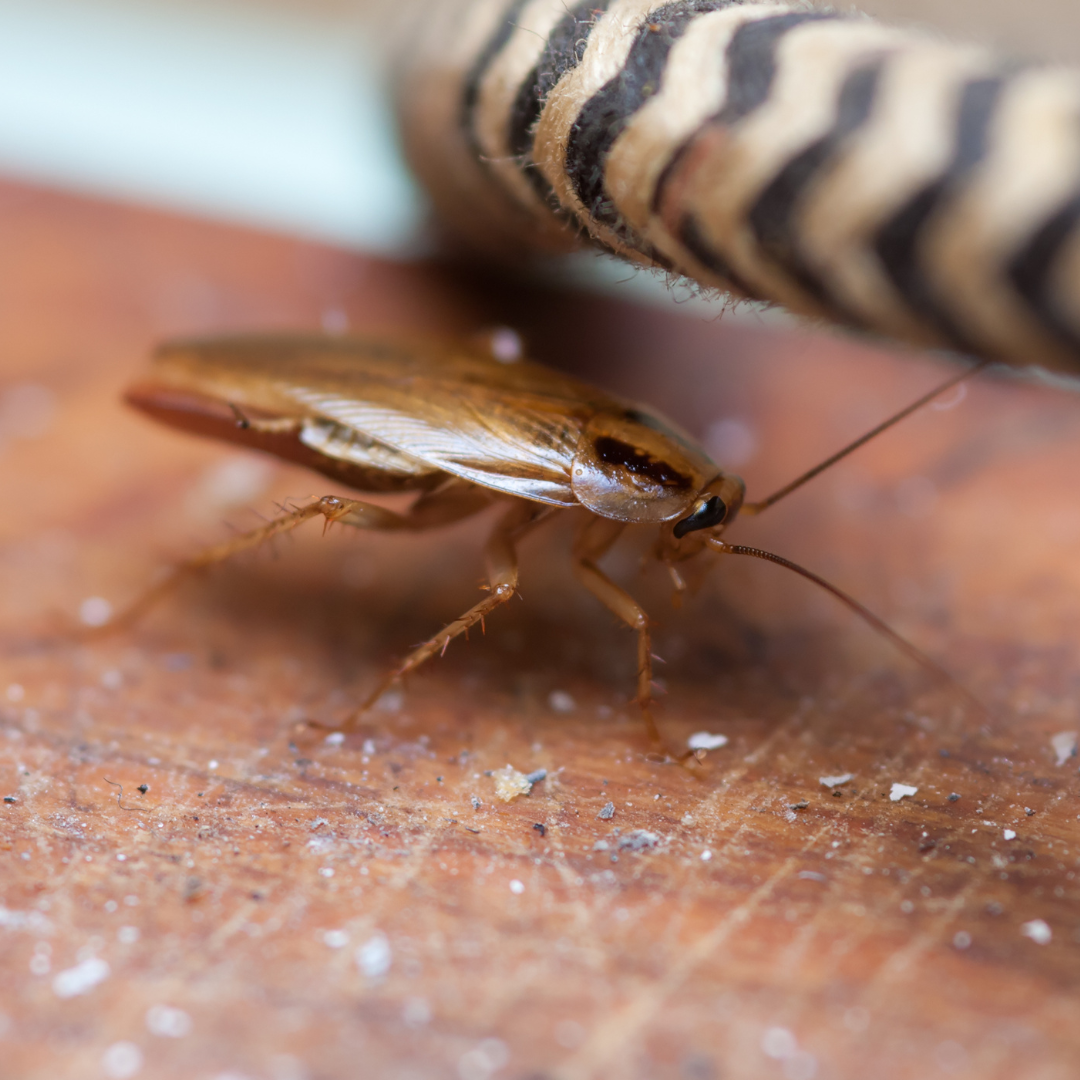Brown-banded Cockroach

Proud Supporter of Disabled Veterans
No Contracts
Services provided without written contracts.
Introduction to
Brown-banded cockroaches are small, agile pests that can infest homes and buildings, causing significant distress and potential health risks. Recognizing and managing these pests effectively requires a thorough understanding of their biology, habits, and the best prevention and control measures. This guide provides detailed information on how to recognize, understand, and manage brown-banded cockroaches, including preventive measures and professional pest control solutions.
Recognition
Brown-banded cockroaches are small, measuring about 1/2 inch in length. They are light brown with distinctive pale brown or yellowish bands across their wings and abdomen. Males have fully developed wings and are capable of flight, while females have shorter wings and do not fly. These cockroaches have long antennae and slender bodies, making them adept at hiding in small cracks and crevices. Nymphs, or immature cockroaches, are smaller but share the same banded pattern. Brown-banded cockroaches are often mistaken for German cockroaches, but their distinctive banding and preference for higher locations can help in identification.
Biology
Brown-banded cockroaches belong to the family Blattellidae and undergo incomplete metamorphosis, developing from eggs to nymphs to adults. Females produce egg cases (oothecae) containing 14-18 eggs, which they attach to hidden surfaces. The eggs hatch into nymphs, which molt several times before reaching adulthood. This process takes about 160 days under optimal conditions. Brown-banded cockroaches are omnivorous and feed on a wide variety of organic materials, including starches, adhesives, book bindings, and even non-food items like nylon stockings. They are particularly attracted to materials with a high starch content.
Habits
Brown-banded cockroaches are nocturnal and prefer warm, dry environments. Unlike other cockroach species that tend to stay near the ground, brown-banded cockroaches are often found in higher locations, such as upper cabinets, shelves, behind picture frames, and in electronics. They are highly active and can spread quickly throughout a building. Brown-banded cockroaches do not require as much moisture as other species, allowing them to infest areas that may not be suitable for other cockroaches. Their presence can be detected by small dark droppings, egg cases, and shed skins.
Prevention
Preventing brown-banded cockroach infestations involves reducing food sources, sealing entry points, and maintaining cleanliness. Store food in airtight containers and promptly clean up spills and crumbs. Regularly clean and declutter areas where cockroaches may hide, such as cabinets, shelves, and storage areas. Seal cracks and gaps around doors, windows, and foundations to prevent their entry. Use weather stripping and screens on doors and windows. Inspect items brought into the home, such as boxes and appliances, for signs of cockroaches. Reducing indoor humidity with dehumidifiers can also help make the environment less hospitable for these pests.
Professional
When brown-banded cockroaches become a persistent problem, professional pest control services can offer effective solutions. STL Pest Control provides comprehensive inspections and tailored treatment plans to address brown-banded cockroach infestations. Their methods include the use of baits, insect growth regulators, and targeted insecticide applications to eliminate existing cockroaches and prevent future infestations. Professional services ensure that the infestation is managed efficiently and safely, minimizing the risk to humans and pets and reducing the inconvenience caused by these pests.



Our Office







